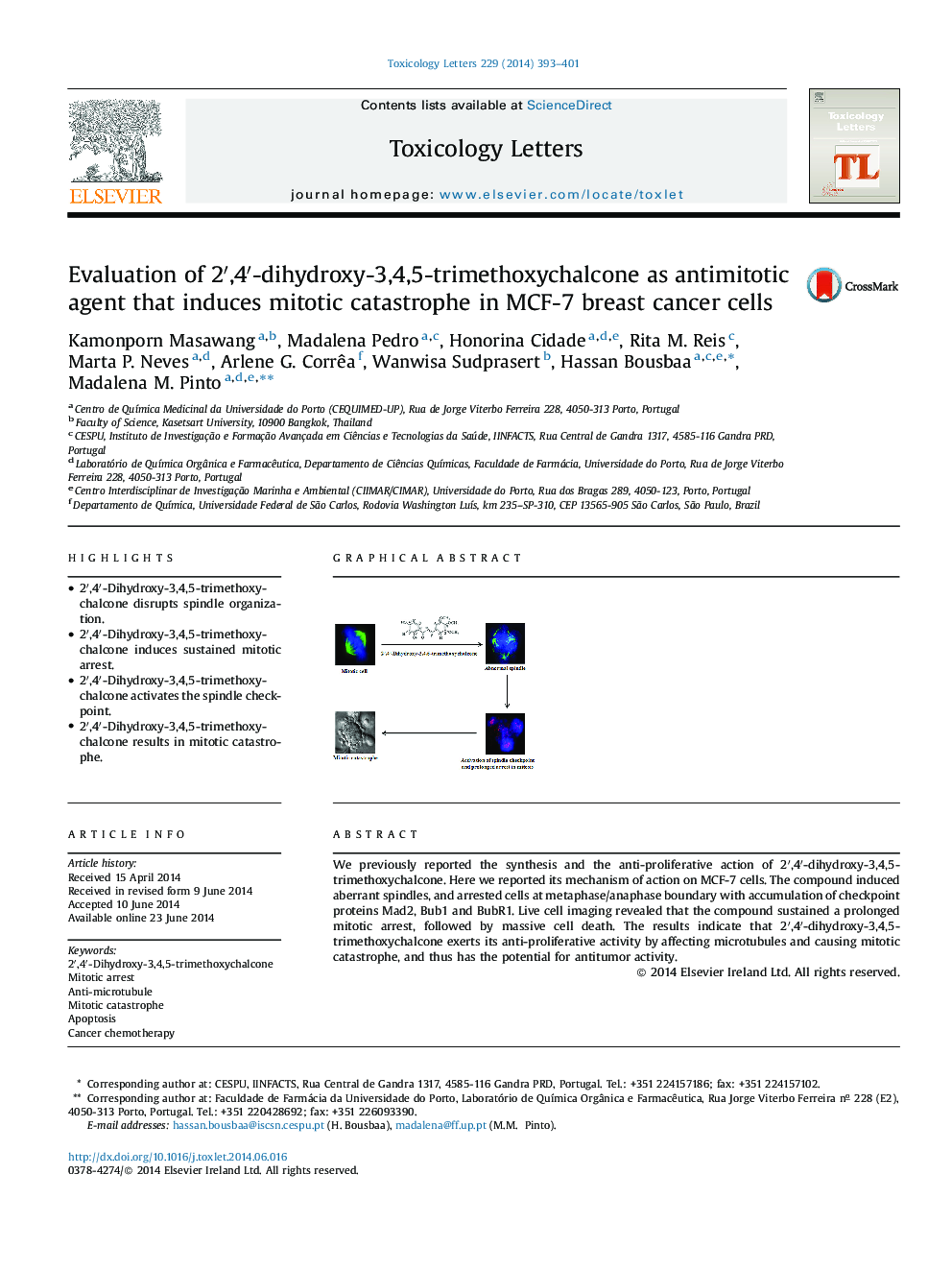| Article ID | Journal | Published Year | Pages | File Type |
|---|---|---|---|---|
| 5860145 | Toxicology Letters | 2014 | 9 Pages |
â¢2â²,4â²-Dihydroxy-3,4,5-trimethoxychalcone disrupts spindle organization.â¢2â²,4â²-Dihydroxy-3,4,5-trimethoxychalcone induces sustained mitotic arrest.â¢2â²,4â²-Dihydroxy-3,4,5-trimethoxychalcone activates the spindle checkpoint.â¢2â²,4â²-Dihydroxy-3,4,5-trimethoxychalcone results in mitotic catastrophe.
We previously reported the synthesis and the anti-proliferative action of 2â²,4â²-dihydroxy-3,4,5-trimethoxychalcone. Here we reported its mechanism of action on MCF-7 cells. The compound induced aberrant spindles, and arrested cells at metaphase/anaphase boundary with accumulation of checkpoint proteins Mad2, Bub1 and BubR1. Live cell imaging revealed that the compound sustained a prolonged mitotic arrest, followed by massive cell death. The results indicate that 2â²,4â²-dihydroxy-3,4,5-trimethoxychalcone exerts its anti-proliferative activity by affecting microtubules and causing mitotic catastrophe, and thus has the potential for antitumor activity.
Graphical abstractDownload full-size image
